Nicholas Mastronarde
On the Effects of Modeling on the Sim-to-Real Transfer Gap in Twinning the POWDER Platform
Aug 26, 2024Abstract:Digital Twin (DT) technology is expected to play a pivotal role in NextG wireless systems. However, a key challenge remains in the evaluation of data-driven algorithms within DTs, particularly the transfer of learning from simulations to real-world environments. In this work, we investigate the sim-to-real gap in developing a digital twin for the NSF PAWR Platform, POWDER. We first develop a 3D model of the University of Utah campus, incorporating geographical measurements and all rooftop POWDER nodes. We then assess the accuracy of various path loss models used in training modeling and control policies, examining the impact of each model on sim-to-real link performance predictions. Finally, we discuss the lessons learned from model selection and simulation design, offering guidance for the implementation of DT-enabled wireless networks.
Cloud-Based Federation Framework and Prototype for Open, Scalable, and Shared Access to NextG and IoT Testbeds
Aug 26, 2024



Abstract:In this work, we present a new federation framework for UnionLabs, an innovative cloud-based resource-sharing infrastructure designed for next-generation (NextG) and Internet of Things (IoT) over-the-air (OTA) experiments. The framework aims to reduce the federation complexity for testbeds developers by automating tedious backend operations, thereby providing scalable federation and remote access to various wireless testbeds. We first describe the key components of the new federation framework, including the Systems Manager Integration Engine (SMIE), the Automated Script Generator (ASG), and the Database Context Manager (DCM). We then prototype and deploy the new Federation Plane on the Amazon Web Services (AWS) public cloud, demonstrating its effectiveness by federating two wireless testbeds: i) UB NeXT, a 5G-and-beyond (5G+) testbed at the University at Buffalo, and ii) UT IoT, an IoT testbed at the University of Utah. Through this work we aim to initiate a grassroots campaign to democratize access to wireless research testbeds with heterogeneous hardware resources and network environment, and accelerate the establishment of a mature, open experimental ecosystem for the wireless community. The API of the new Federation Plane will be released to the community after internal testing is completed.
Spectrum Coexistence of Satellite-borne Passive Radiometry and Terrestrial Next-G Networks
Feb 12, 2024



Abstract:Spectrum coexistence between terrestrial Next-G cellular networks and space-borne remote sensing (RS) is now gaining attention. One major question is how this would impact RS equipment. In this study, we develop a framework based on stochastic geometry to evaluate the statistical characteristics of radio frequency interference (RFI) originating from a large-scale terrestrial Next-G network operating in the same frequency band as an RS satellite. For illustration, we consider a network operating in the restricted L-band (1400-1427 MHz) with NASA's Soil Moisture Active Passive (SMAP) satellite, which is one of the latest RS satellites active in this band. We use the Thomas Cluster Process (TCP) to model RFI from clusters of cellular base stations on SMAP's antenna's main- and side-lobes. We show that a large number of active clusters can operate in the restricted L-band without compromising SMAP's mission if they avoid interfering with the main-lobe of its antenna. This is possible thanks to SMAP's extremely low side-lobe antenna gains.
Coexistence of Satellite-borne Passive Radiometry and Terrestrial NextG Wireless Networks in the 1400-1427 MHz Restricted L-Band
Dec 13, 2023Abstract:The rapid growth of wireless technologies has fostered research on spectrum coexistence worldwide. One idea that is gaining attention is using frequency bands solely devoted to passive applications, such as passive remote sensing. One such option is the 27 MHz L-band spectrum from 1.400 GHz to 1.427 GHz. Active wireless transmissions are prohibited in this passive band due to radio regulations aimed at preventing Radio Frequency Interference (RFI) on highly sensitive passive radiometry instruments. The Soil Moisture Active Passive (SMAP) satellite, launched by the National Aeronautics and Space Administration (NASA), is a recent space-based remote sensing mission that passively scans the Earth's electromagnetic emissions in this 27 MHz band to assess soil moisture on a global scale periodically. This paper evaluates using the restricted L-band for active terrestrial wireless communications through two means. First, we investigate an opportunistic temporal use of this passive band within a terrestrial wireless network, such as a cluster of cells, during periods when there is no Line of Sight (LoS) between SMAP and the terrestrial network. Second, leveraging stochastic geometry, we assess the feasibility of using this passive band within a large-scale network in LoS of SMAP while ensuring that the error induced on SMAP's measurements due to RFI is below a given threshold. The methodology established here, although based on SMAP's specifications, is adaptable for utilization with various passive sensing satellites regardless of their orbits or operating frequencies.
minimizing estimation error variance using a weighted sum of samples from the soil moisture active passive (SMAP) satellite
Jun 18, 2023Abstract:The National Aeronautics and Space Administration's (NASA) Soil Moisture Active Passive (SMAP) is the latest passive remote sensing satellite operating in the protected L-band spectrum from 1.400 to 1.427 GHz. SMAP provides global-scale soil moisture images with point-wise passive scanning of the earth's thermal radiations. SMAP takes multiple samples in frequency and time from each antenna footprint to increase the likelihood of capturing RFI-free samples. SMAP's current RFI detection and mitigation algorithm excludes samples detected to be RFI-contaminated and averages the remaining samples. But this approach can be less effective for harsh RFI environments, where RFI contamination is present in all or a large number of samples. In this paper, we investigate a bias-free weighted sum of samples estimator, where the weights can be computed based on the RFI's statistical properties.
What is Interpretable? Using Machine Learning to Design Interpretable Decision-Support Systems
Nov 27, 2018
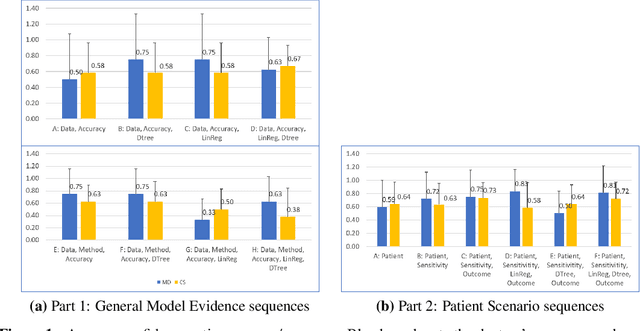


Abstract:Recent efforts in Machine Learning (ML) interpretability have focused on creating methods for explaining black-box ML models. However, these methods rely on the assumption that simple approximations, such as linear models or decision-trees, are inherently human-interpretable, which has not been empirically tested. Additionally, past efforts have focused exclusively on comprehension, neglecting to explore the trust component necessary to convince non-technical experts, such as clinicians, to utilize ML models in practice. In this paper, we posit that reinforcement learning (RL) can be used to learn what is interpretable to different users and, consequently, build their trust in ML models. To validate this idea, we first train a neural network to provide risk assessments for heart failure patients. We then design a RL-based clinical decision-support system (DSS) around the neural network model, which can learn from its interactions with users. We conduct an experiment involving a diverse set of clinicians from multiple institutions in three different countries. Our results demonstrate that ML experts cannot accurately predict which system outputs will maximize clinicians' confidence in the underlying neural network model, and suggest additional findings that have broad implications to the future of research into ML interpretability and the use of ML in medicine.
Estimation of Individual Treatment Effect in Latent Confounder Models via Adversarial Learning
Nov 21, 2018

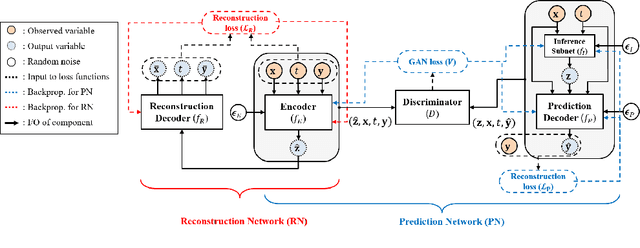

Abstract:Estimating the individual treatment effect (ITE) from observational data is essential in medicine. A central challenge in estimating the ITE is handling confounders, which are factors that affect both an intervention and its outcome. Most previous work relies on the unconfoundedness assumption, which posits that all the confounders are measured in the observational data. However, if there are unmeasurable (latent) confounders, then confounding bias is introduced. Fortunately, noisy proxies for the latent confounders are often available and can be used to make an unbiased estimate of the ITE. In this paper, we develop a novel adversarial learning framework to make unbiased estimates of the ITE using noisy proxies.
Accelerated Structure-Aware Reinforcement Learning for Delay-Sensitive Energy Harvesting Wireless Sensors
Jul 22, 2018
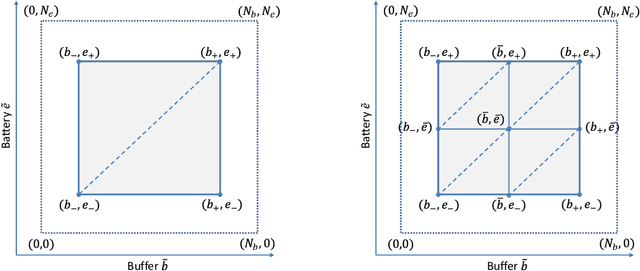
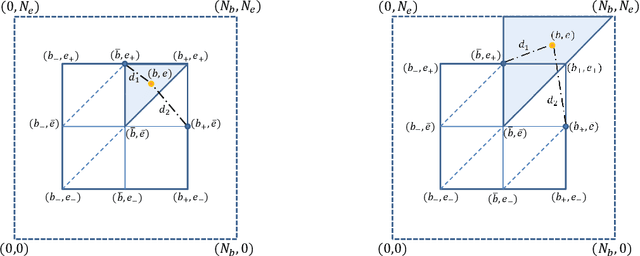
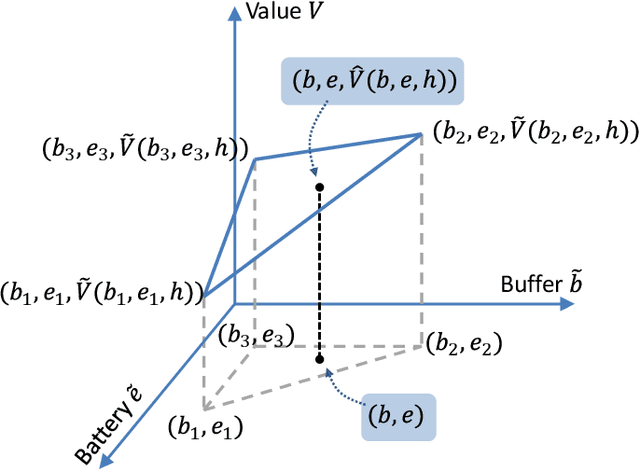
Abstract:We investigate an energy-harvesting wireless sensor transmitting latency-sensitive data over a fading channel. The sensor injects captured data packets into its transmission queue and relies on ambient energy harvested from the environment to transmit them. We aim to find the optimal scheduling policy that decides whether or not to transmit the queue's head-of-line packet at each transmission opportunity such that the expected packet queuing delay is minimized given the available harvested energy. No prior knowledge of the stochastic processes that govern the channel, captured data, or harvested energy dynamics are assumed, thereby necessitating the use of online learning to optimize the scheduling policy. We formulate this scheduling problem as a Markov decision process (MDP) and analyze the structural properties of its optimal value function. In particular, we show that it is non-decreasing and has increasing differences in the queue backlog and that it is non-increasing and has increasing differences in the battery state. We exploit this structure to formulate a novel accelerated reinforcement learning (RL) algorithm to solve the scheduling problem online at a much faster learning rate, while limiting the induced computational complexity. Our experiments demonstrate that the proposed algorithm closely approximates the performance of an optimal offline solution that requires a priori knowledge of the channel, captured data, and harvested energy dynamics. Simultaneously, by leveraging the value function's structure, our approach achieves competitive performance relative to a state-of-the-art RL algorithm, at potentially orders of magnitude lower complexity. Finally, considerable performance gains are demonstrated over the well-known Q-learning algorithm.
UB-ANC Drone: A Flexible Airborne Networking and Communications Testbed
Jul 21, 2018

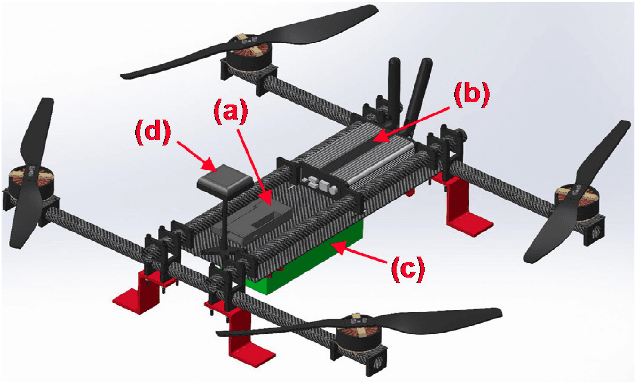

Abstract:We present the University at Buffalo's Airborne Networking and Communications Testbed (UB-ANC Drone). UB-ANC Drone is an open software/hardware platform that aims to facilitate rapid testing and repeatable comparative evaluation of airborne networking and communications protocols at different layers of the protocol stack. It combines quadcopters capable of autonomous flight with sophisticated command and control capabilities and embedded software-defined radios (SDRs), which enable flexible deployment of novel communications and networking protocols. This is in contrast to existing airborne network testbeds, which rely on standard inflexible wireless technologies, e.g., Wi-Fi or Zigbee. UB-ANC Drone is designed with emphasis on modularity and extensibility, and is built around popular open-source projects and standards developed by the research and hobby communities. This makes UB-ANC Drone highly customizable, while also simplifying its adoption. In this paper, we describe UB-ANC Drone's hardware and software architecture.
Fast Reinforcement Learning for Energy-Efficient Wireless Communications
Jun 05, 2013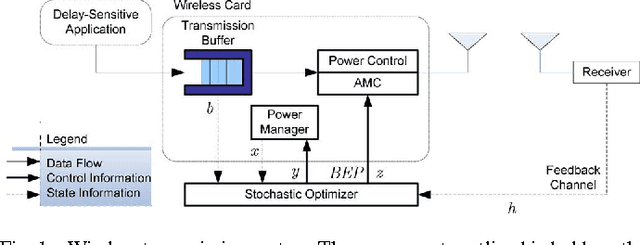

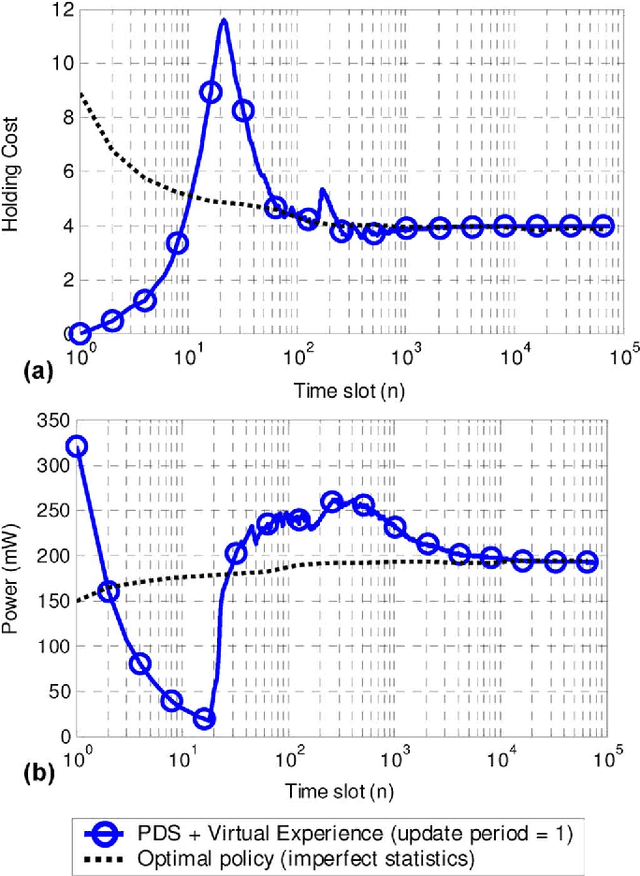

Abstract:We consider the problem of energy-efficient point-to-point transmission of delay-sensitive data (e.g. multimedia data) over a fading channel. Existing research on this topic utilizes either physical-layer centric solutions, namely power-control and adaptive modulation and coding (AMC), or system-level solutions based on dynamic power management (DPM); however, there is currently no rigorous and unified framework for simultaneously utilizing both physical-layer centric and system-level techniques to achieve the minimum possible energy consumption, under delay constraints, in the presence of stochastic and a priori unknown traffic and channel conditions. In this report, we propose such a framework. We formulate the stochastic optimization problem as a Markov decision process (MDP) and solve it online using reinforcement learning. The advantages of the proposed online method are that (i) it does not require a priori knowledge of the traffic arrival and channel statistics to determine the jointly optimal power-control, AMC, and DPM policies; (ii) it exploits partial information about the system so that less information needs to be learned than when using conventional reinforcement learning algorithms; and (iii) it obviates the need for action exploration, which severely limits the adaptation speed and run-time performance of conventional reinforcement learning algorithms. Our results show that the proposed learning algorithms can converge up to two orders of magnitude faster than a state-of-the-art learning algorithm for physical layer power-control and up to three orders of magnitude faster than conventional reinforcement learning algorithms.
 Add to Chrome
Add to Chrome Add to Firefox
Add to Firefox Add to Edge
Add to Edge